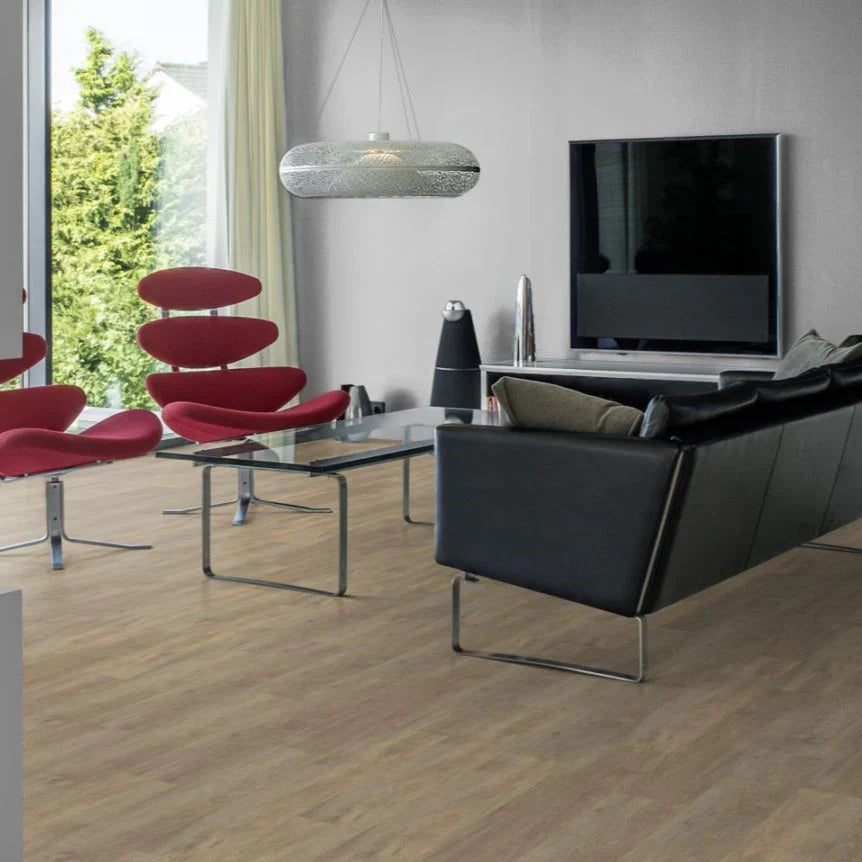
The UK’s famously damp weather brings with it a unique challenge for homeowners — selecting flooring that can handle humidity, rain, and fluctuating indoor moisture. Whether it’s muddy boots in the hallway, moisture-prone bathrooms, or steamy kitchens, not all flooring materials are equally prepared for the British climate.
In this guide, we explore the best flooring options for dealing with the UK’s often wet and humid conditions, focusing on durability, water resistance, and long-term maintenance.
Key Flooring Concerns in the UK Climate
Before choosing flooring, it's worth understanding the specific challenges posed by the UK environment:
-
High humidity indoors, especially in bathrooms, kitchens, and utility rooms
-
Frequent rainfall, leading to wet shoes and umbrellas in entranceways
-
Condensation due to temperature shifts and poorly ventilated spaces
-
Underfloor heating becoming more common, adding another layer of moisture variation
The ideal flooring should be resistant to moisture, stable under temperature swings, and easy to clean without warping or staining.
Top Flooring Options for Humid and Rainy Conditions
1. Luxury Vinyl Tile (LVT)
LVT is one of the most reliable choices for wet and humid environments. It’s fully waterproof, highly durable, and available in wood, stone, and ceramic-effect styles.
Ideal for: Bathrooms, kitchens, hallways, utility rooms
Benefits:
-
100% waterproof core
-
Easy to clean and maintain
-
Won’t warp, swell, or stain from water exposure
-
Comfortable underfoot and suitable for underfloor heating
2. Stone Plastic Composite (SPC) Vinyl Flooring
A newer innovation in vinyl flooring, SPC has a rigid core that offers excellent stability in damp environments. It combines the look of natural flooring with practical, moisture-resistant performance.
Ideal for: Ground floor installations, open-plan living areas
Benefits:
-
Waterproof and temperature stable
-
Click-lock systems for tight, secure installation
-
Minimal expansion or contraction
-
Excellent for high-traffic areas exposed to moisture
3. Porcelain or Ceramic Tile
For areas that need full water resistance, tile remains a tried-and-tested option. Both ceramic and porcelain tiles are non-porous, hardwearing, and ideal for wet zones.
Ideal for: Bathrooms, porches, conservatories
Benefits:
-
Resistant to water, stains, and scratches
-
Long-lasting and easy to disinfect
-
Compatible with underfloor heating
-
Available in a range of sizes and finishes
The key with tile flooring is proper grouting and sealing to prevent moisture from seeping below the surface.
4. Engineered Wood Flooring (with caution)
Engineered wood is more stable than solid wood in humid conditions, thanks to its layered construction. However, it should be used with care in areas prone to direct water contact.
Ideal for: Living rooms, bedrooms, and home offices
Benefits:
-
Less prone to warping than solid wood
-
Works well with underfloor heating
-
Offers the warmth and texture of real wood
-
Can be sealed for added protection
Avoid using engineered wood in bathrooms or near exterior doors unless specifically rated for those conditions.
5. Laminate Flooring (Water-Resistant Types Only)
Standard laminate does not cope well with water, but water-resistant or waterproof laminates have improved dramatically in recent years. Choose high-quality options designed to resist spills and moisture.
Ideal for: Bedrooms, lounges, and landings
Benefits:
-
More affordable than real wood
-
Click-fit installation makes it easy to replace if needed
-
Durable surface layers resist wear
-
Low-maintenance with a realistic wood look
Only use waterproof-rated laminates in moisture-prone areas, and always follow the manufacturer's guidance.
Flooring to Avoid in Wet UK Conditions
-
Solid wood flooring – prone to swelling and warping from moisture
-
Carpet – can hold moisture, harbour mould, and stain easily
-
Cheap laminate or vinyl – may lift or bubble with water exposure and lack the protective layers of better-quality options
Tips for Protecting Your Floors in a Damp Climate
-
Use doormats at every entrance to reduce dirt and water tracking
-
Install proper ventilation in bathrooms and kitchens
-
Choose flooring with sealed edges or click-lock installation to prevent water ingress
-
Clean up spills promptly and avoid standing water
-
Maintain consistent indoor temperatures to reduce condensation
Finding the Right Flooring for Your Home
The best flooring for the UK climate is one that combines moisture resistance with style and practicality. Whether you opt for the modern durability of vinyl, the timeless charm of engineered wood, or the resilience of porcelain tiles, your floor should be ready for everything the weather brings in, and still look great year after year.
Explore our full range of moisture-resistant flooring or speak with our team for expert advice tailored to your home and lifestyle.
